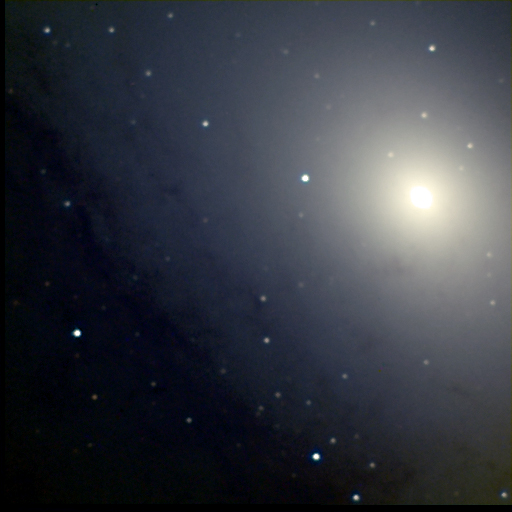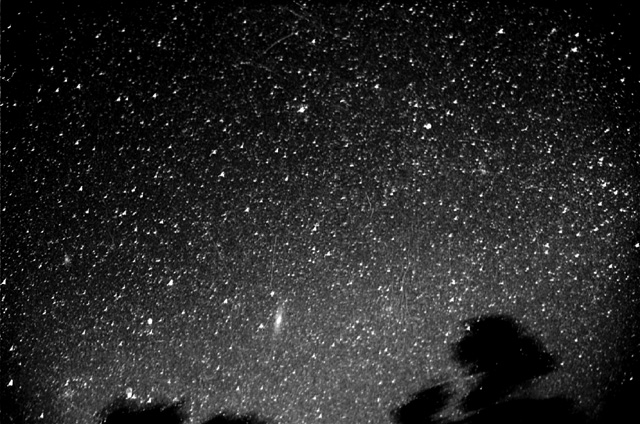
20 minutes exposure Kodak Tri-X 400 film, 50mm f/2 Yashicha camera.
| Object Type | Galaxy Sb |
| Constellation | Andromeda |
| Magnitude | 3.5 |
| Size | 189.0' x 62.0' |
M31 is probably the most famous galaxy after the Milky Way. It is easily visible in binoculars and can be seen with the naked eye, even if the skies are only moderately dark. It is the nearest spiral galaxy to the Milky Way, being situated at a distance of about 2.2 million light years. It is often considered to be the most distant object visible to the naked eye, however if the skies are reasonably dark, M33 is not too difficult with the naked eye. Also, observers with good eyesight and under very dark skies, have reported sighting, M81(northern hemisphere) and NGC 5128 (southern hemisphere).
M31 is a giant spiral galaxy that is somewhat larger then the Milky Way, with a diameter of around 150,000 light years. Visually it spans about 6 degrees of the sky, which makes it difficult to apreciate in the telescope unless low magnification is used. Under dark skies it is possible to follow the spiral arms for a considerable distance. With larger telescopes, several of the globular clusters can be observed.
M31 has 4 companion galaxies. Two are in the neighbouring constellation Casseopeia, and two are very close to M31. These two are M32 and M110, and both are visible in the photograph below. M32 is the brighter one below the centre of M31, while the other, to the upper right, is M110. These objects are easily visible in almost any telescope.

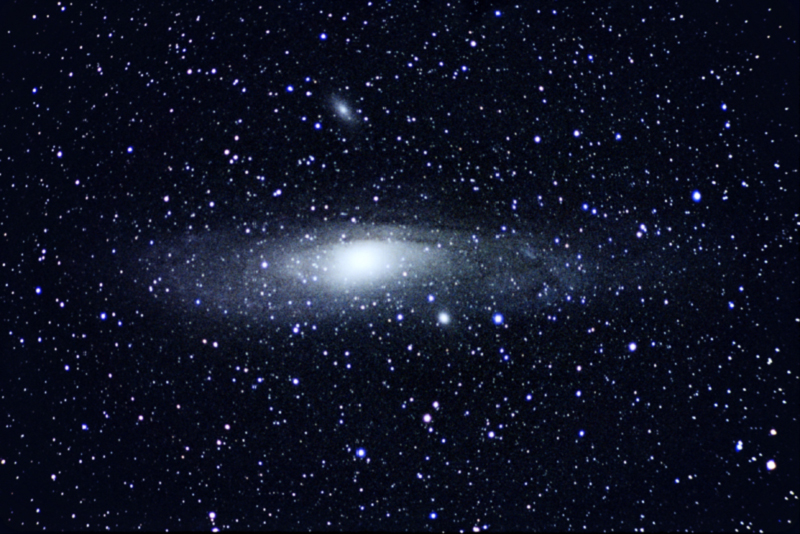
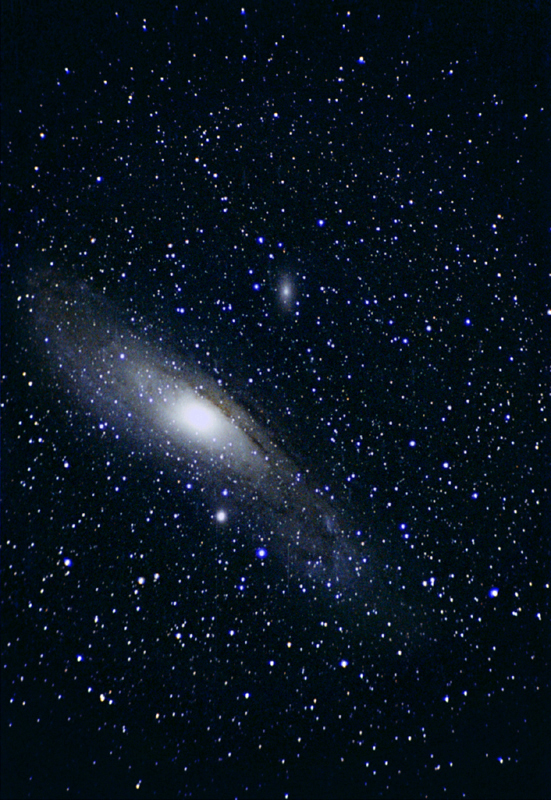
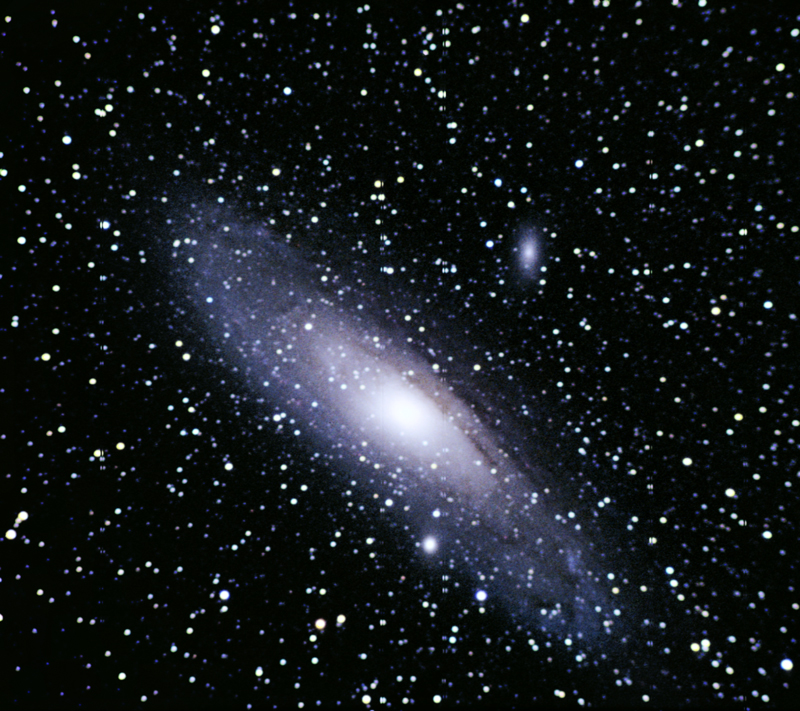
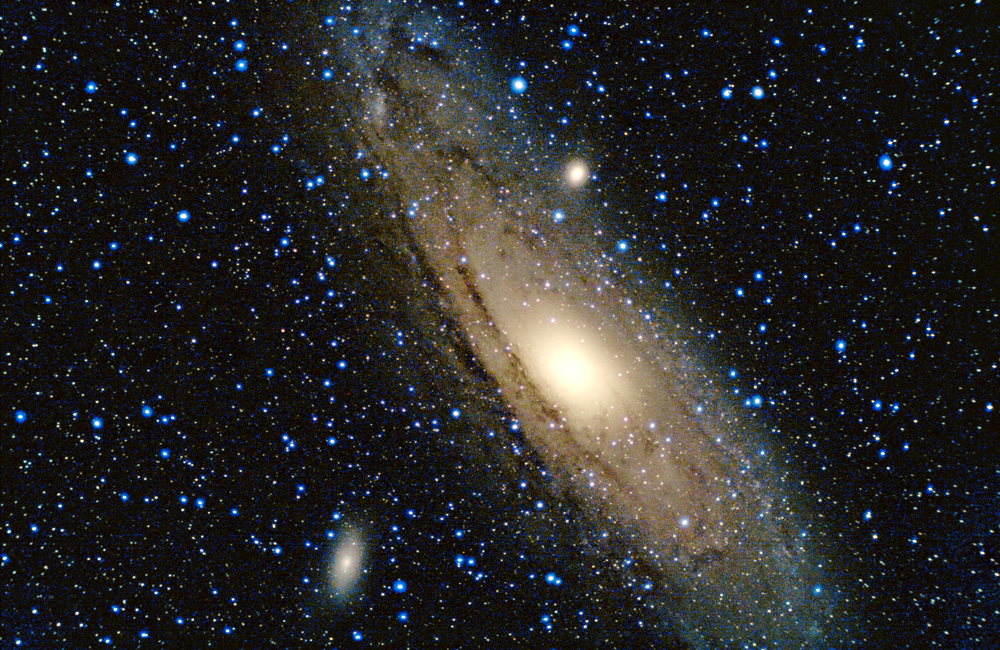
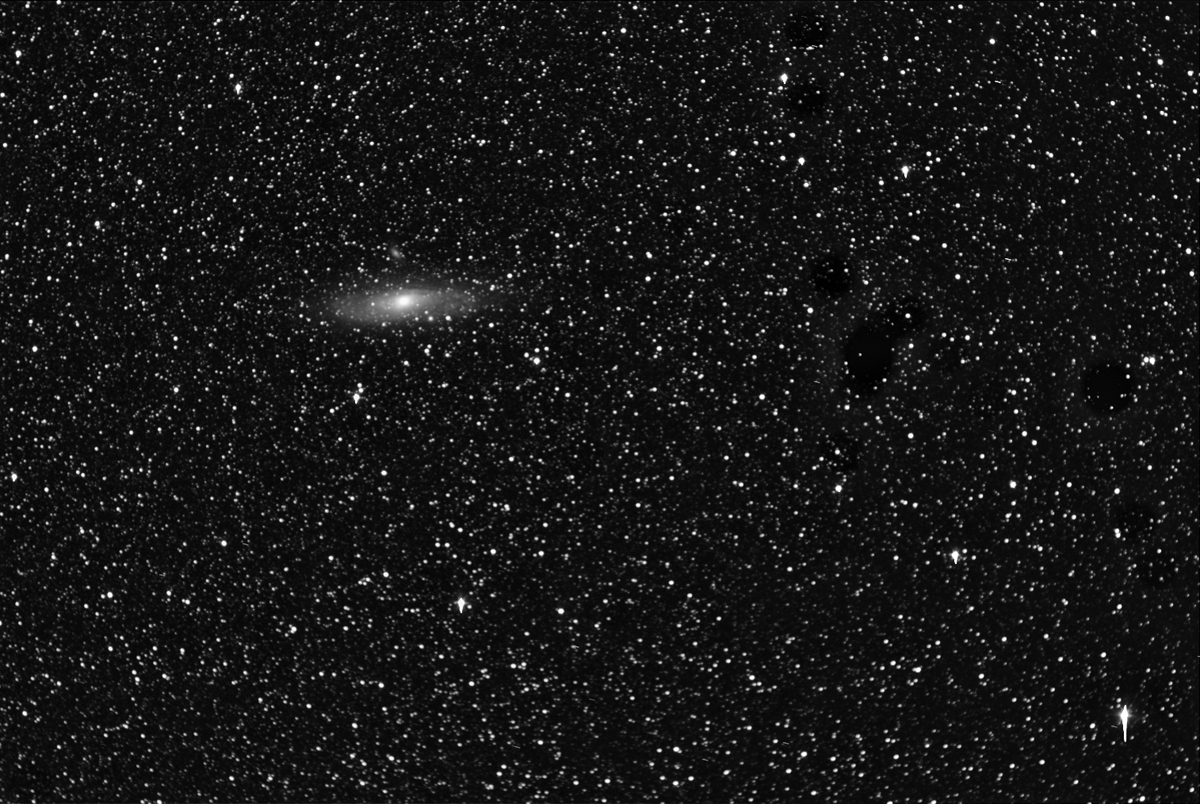
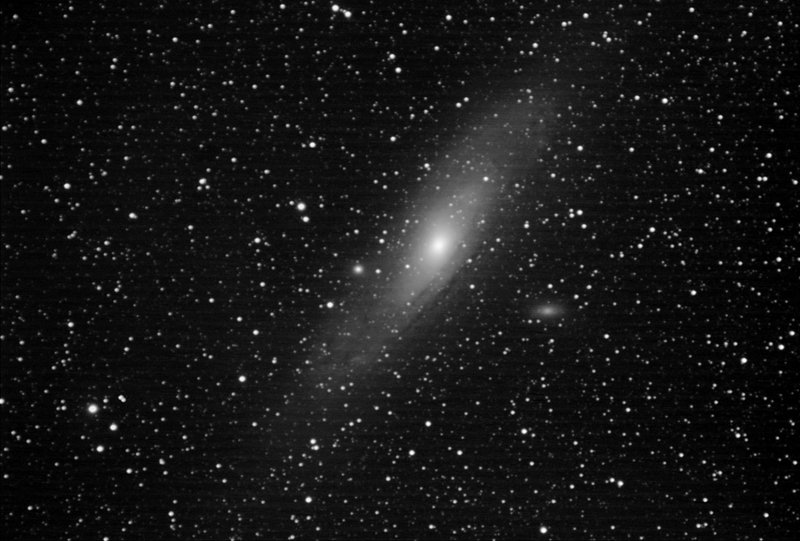
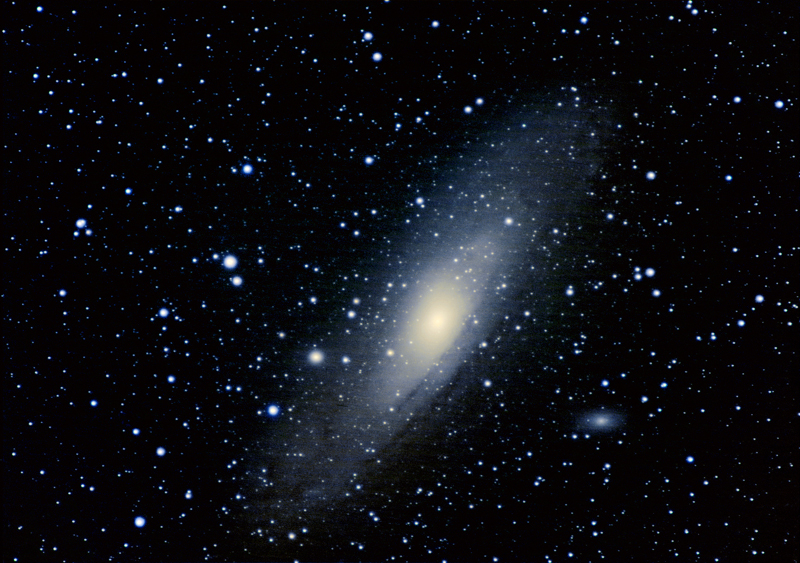
Combination of 10, 3 minute exposures using red, green and blue filters.
SBIG ST8XE CCD camera. 300mm f/3.5 Tameron lens.
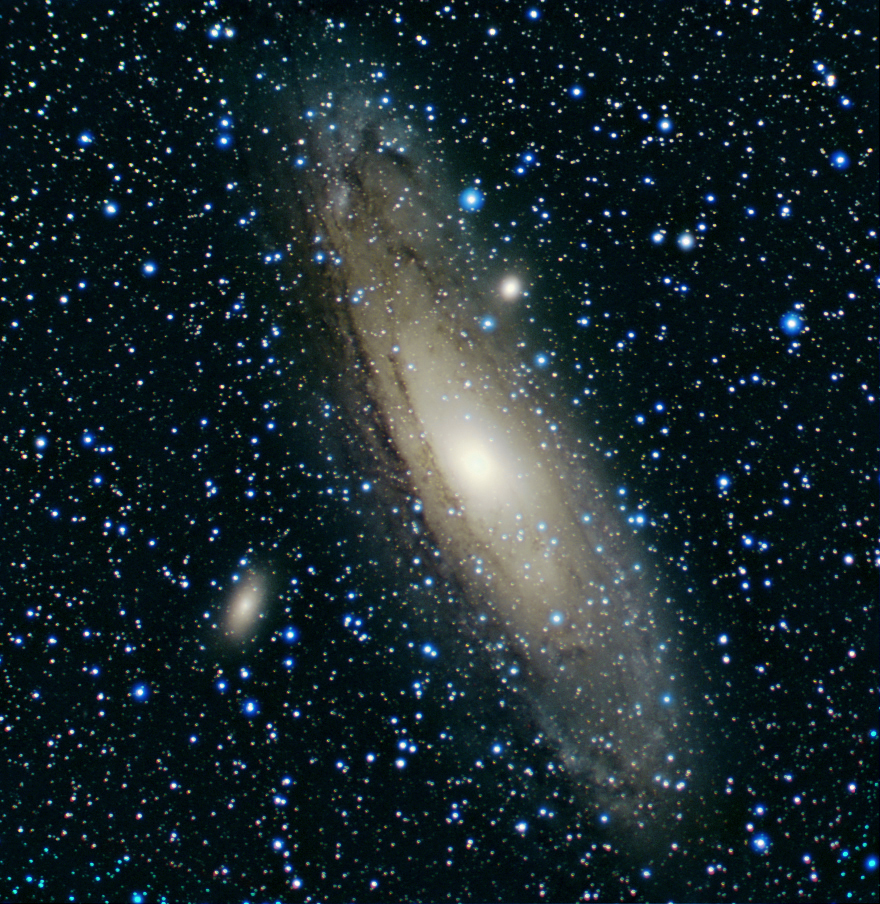
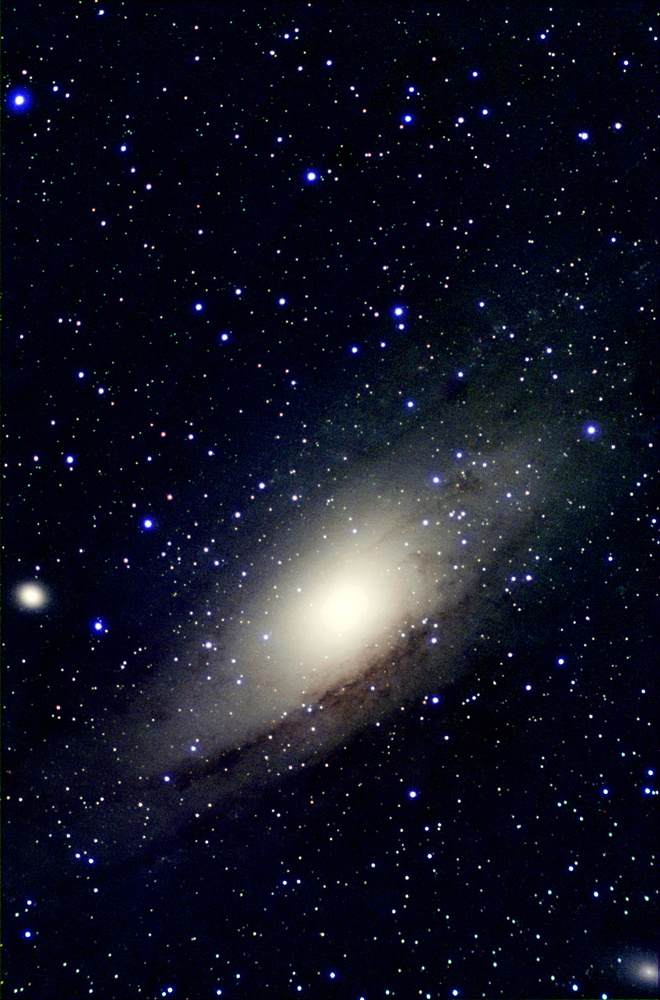
Combination of 12, 5 minute exposures using red, green and blue filters.
SBIG ST8XE CCD camera. 5" f/5 refractor at prime focus.
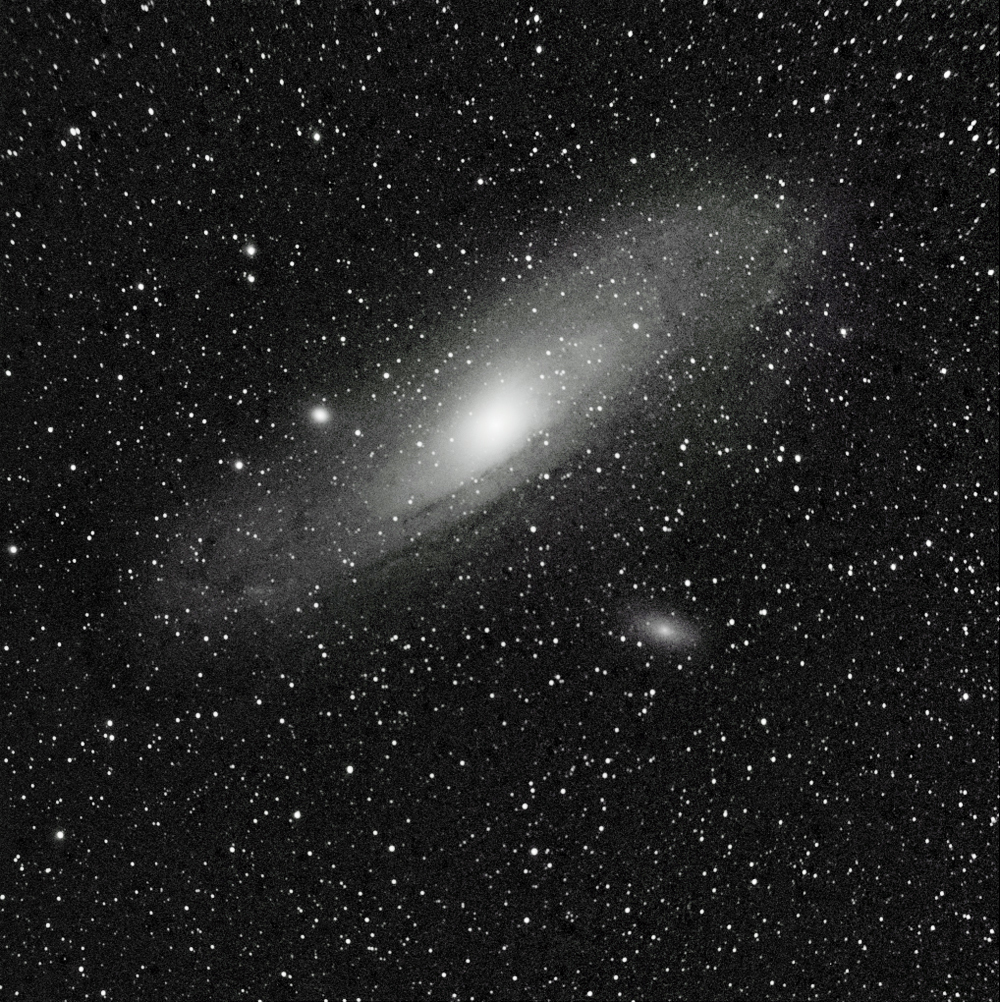
Combination of 40, 1 minute exposures using a blue filter.
SBIG STL-1001E CCD camera. 5" f/5 refractor at prime focus.
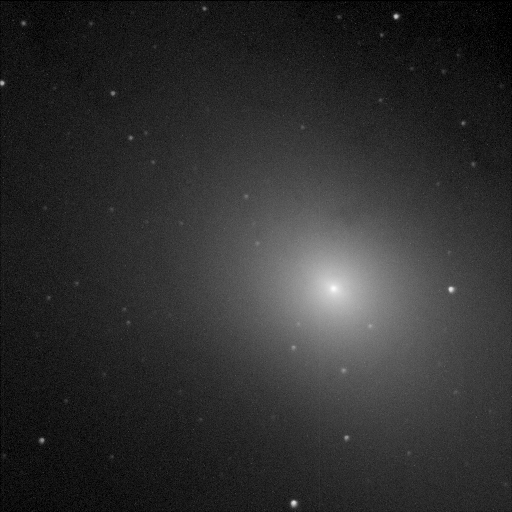
10 seconds exposure.
SBIG ST9E CCD camera. 14" f/11 schmidt-cassegrain at prime focus.
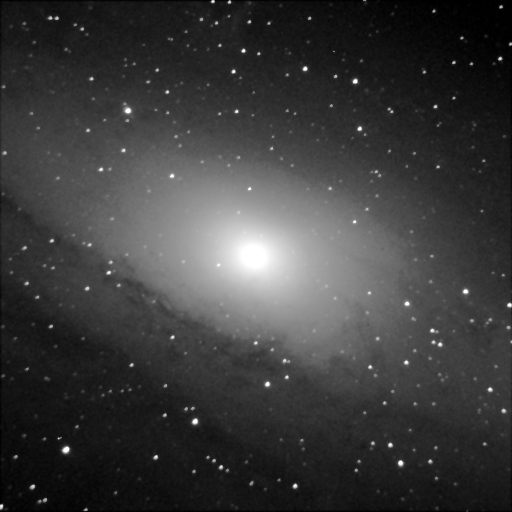
Combination of 10, 1 minute exposures.
SBIG ST9E CCD camera. 14" f/11 schmidt-cassegrain with f/6.3 focal reducer.
